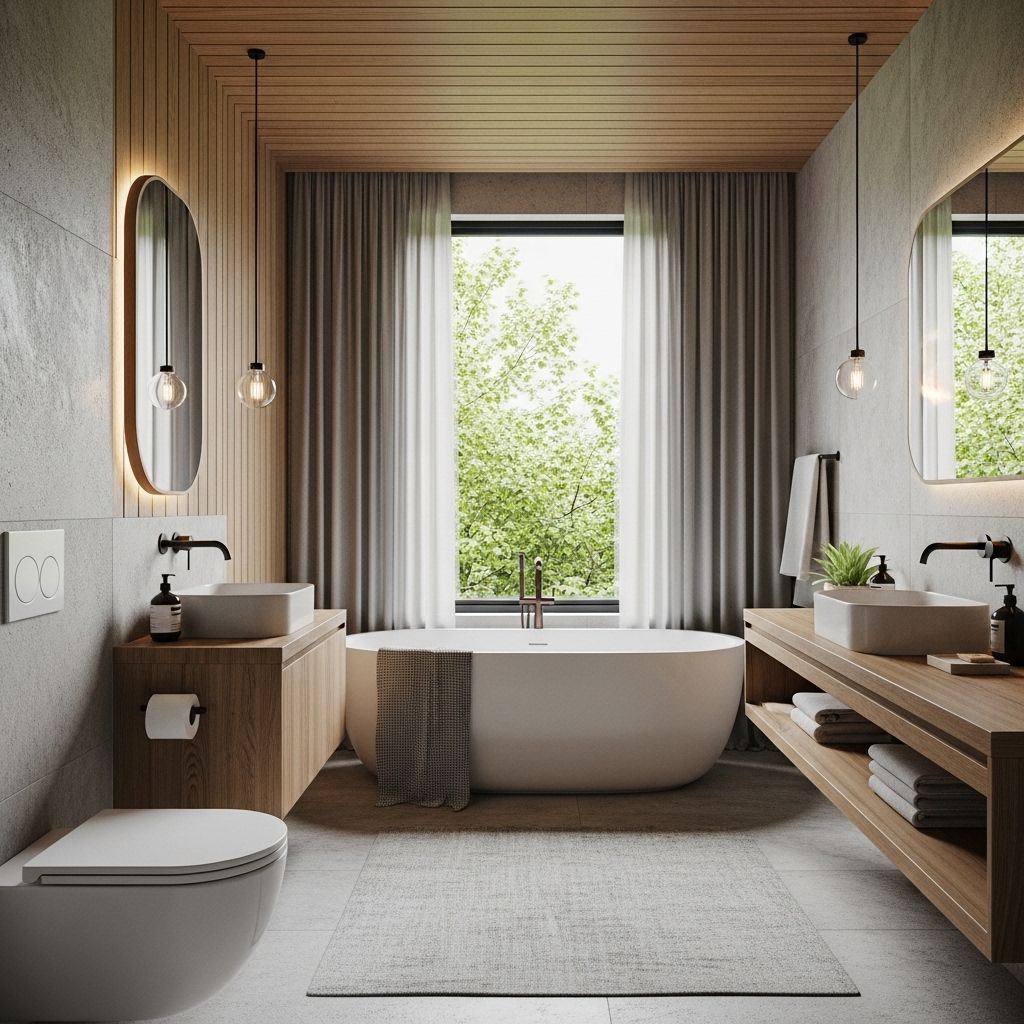In the fast-paced world of technology and design, minimalism has become a powerful trend that continues to evolve. As we look ahead to 2025, it’s crucial to explore how minimalist design can shape our environments, products, and even digital experiences. This article delves into ten innovative minimalist design ideas that are set to define the future.
Table of Contents
The Essence of Minimalism
Minimalism is more than just a design trend; it’s a lifestyle choice that emphasizes simplicity, functionality, and a reduction of excess. By stripping away the non-essential elements, designers can create spaces and products that are not only aesthetically pleasing but also promote clarity and focus.
Key Principles of Minimalist Design
- Functionality: Every element must serve a purpose.
- Clarity: Designs should be clear and easy to understand.
- Balance: Achieving visual harmony is crucial.
- Negative Space: Emphasizing empty space can enhance focus.
- Quality Over Quantity: Investing in fewer, high-quality pieces is preferred.
1. Sustainable Materials
As the world becomes more environmentally conscious, the use of sustainable materials will play a pivotal role in minimalist design. Here are some materials to consider:
| Material | Benefits |
|---|---|
| Bamboo | Fast-growing and renewable. |
| Recycled Plastics | Reduces waste and promotes recycling. |
| Cork | Natural insulation and durability. |
| Reclaimed Wood | Unique aesthetics with a lower carbon footprint. |
2. Biophilic Design Elements
Integrating nature into design is essential for creating calming spaces. In 2025, expect to see a rise in:
- Indoor gardens that promote air quality.
- Natural light optimization through large windows.
- Use of organic shapes in furniture and architecture.
Benefits of Biophilic Design
- Improved well-being and mood.
- Increased productivity.
- Stronger connection to the environment.
3. Smart Minimalism
With the advancement of technology, homes and workspaces are becoming smarter. Minimalist designs will merge seamlessly with tech through:
Smart Home Integration
Devices that optimize energy use while maintaining a clutter-free aesthetic, such as:
- Hidden smart speakers.
- Smart lighting systems that adjust automatically.
- Minimalist appliances that offer multifunctionality.
4. Modular Furniture
Flexibility is key in modern living spaces. Modular furniture allows for adaptability, which is essential for minimalist design. Features include:
- Pieces that can be reconfigured for various uses.
- Storage solutions that reduce visual clutter.
- Multi-purpose items that combine functionality.
Examples of Modular Furniture
Consider these innovative pieces:
- Sofa systems that can be rearranged.
- Folding desks and chairs for compact storage.
- Stackable storage units for versatile organization.
5. Earthy Color Palettes
In 2025, expect a shift towards earthy tones that promote tranquility. Popular colors will include:
- Soft taupes and beiges.
- Muted greens and blues.
- Warm terracotta and clay shades.
Benefits of Earthy Colors
These color choices not only enhance aesthetics but also:
- Create a calming atmosphere.
- Encourage mindfulness and focus.
- Provide a timeless appeal that transcends trends.
6. Digital Minimalism
As technology continues to infiltrate our daily lives, digital minimalism will become paramount. This includes:
Simplified User Interfaces
Designers will focus on:
- Reducing clutter in apps and websites.
- Using clear typography and ample whitespace.
- Enhancing user experiences through intuitive design.
7. Architectural Simplicity
Buildings and structures in 2025 will focus on simplicity in form and function. Characteristics of minimalist architecture include:
- Open floor plans that promote flow.
- Natural materials that blend with the surroundings.
- Maximized natural light to create inviting spaces.
8. Functional Accessories
Accessories will not just be decorative; they will serve a purpose. Look for:
Minimalist Decor Pieces
Examples include:
- Elegant wall clocks.
- Multi-functional organizers.
- Art pieces that serve dual functions.
9. Textured Surfaces
Textures add depth and interest to minimal designs. In 2025, expect a rise in:
- Natural stone finishes.
- Textured textiles that evoke warmth.
- Wood grains that highlight craftsmanship.
10. Personalization through Minimalism
Although minimalism emphasizes simplicity, personal touches will remain important. Consider incorporating:
Customizable Elements
This could involve:
- Artwork that reflects personal identity.
- Color accents tailored to individual tastes.
- Functional designs that cater to specific needs.
By embracing these ten minimalist design ideas, the year 2025 promises to be a celebration of simplicity, sustainability, and smart living. As we navigate this new landscape, the focus will be on creating environments and products that not only look good but also enhance our quality of life.
FAQ
What are minimalist design principles?
Minimalist design principles focus on simplicity, functionality, and the elimination of excess. It emphasizes clean lines, a limited color palette, and the use of negative space to create a serene and uncluttered environment.
How can I incorporate minimalist design into my home?
You can incorporate minimalist design into your home by decluttering your space, choosing multifunctional furniture, using a neutral color scheme, and adding only essential decor items that reflect your personal style.
What colors are popular in minimalist design for 2025?
For 2025, popular colors in minimalist design include soft neutrals like beige and grey, along with subtle pastels and earthy tones. These colors create a calming atmosphere while maintaining a modern aesthetic.
Can minimalist design work in small spaces?
Yes, minimalist design is particularly effective in small spaces as it maximizes functionality while minimizing clutter. Using sleek furniture and choosing light colors can help create the illusion of a larger area.
What are some key furniture pieces for a minimalist design?
Key furniture pieces for a minimalist design include streamlined sofas, simple coffee tables, open shelving units, and multifunctional items like storage ottomans. These pieces should have clean lines and serve practical purposes.
How does lighting play a role in minimalist design?
Lighting is crucial in minimalist design as it enhances the space without adding clutter. Natural light is preferred, but when using artificial lighting, choose fixtures that are simple and unobtrusive to maintain a clean aesthetic.









